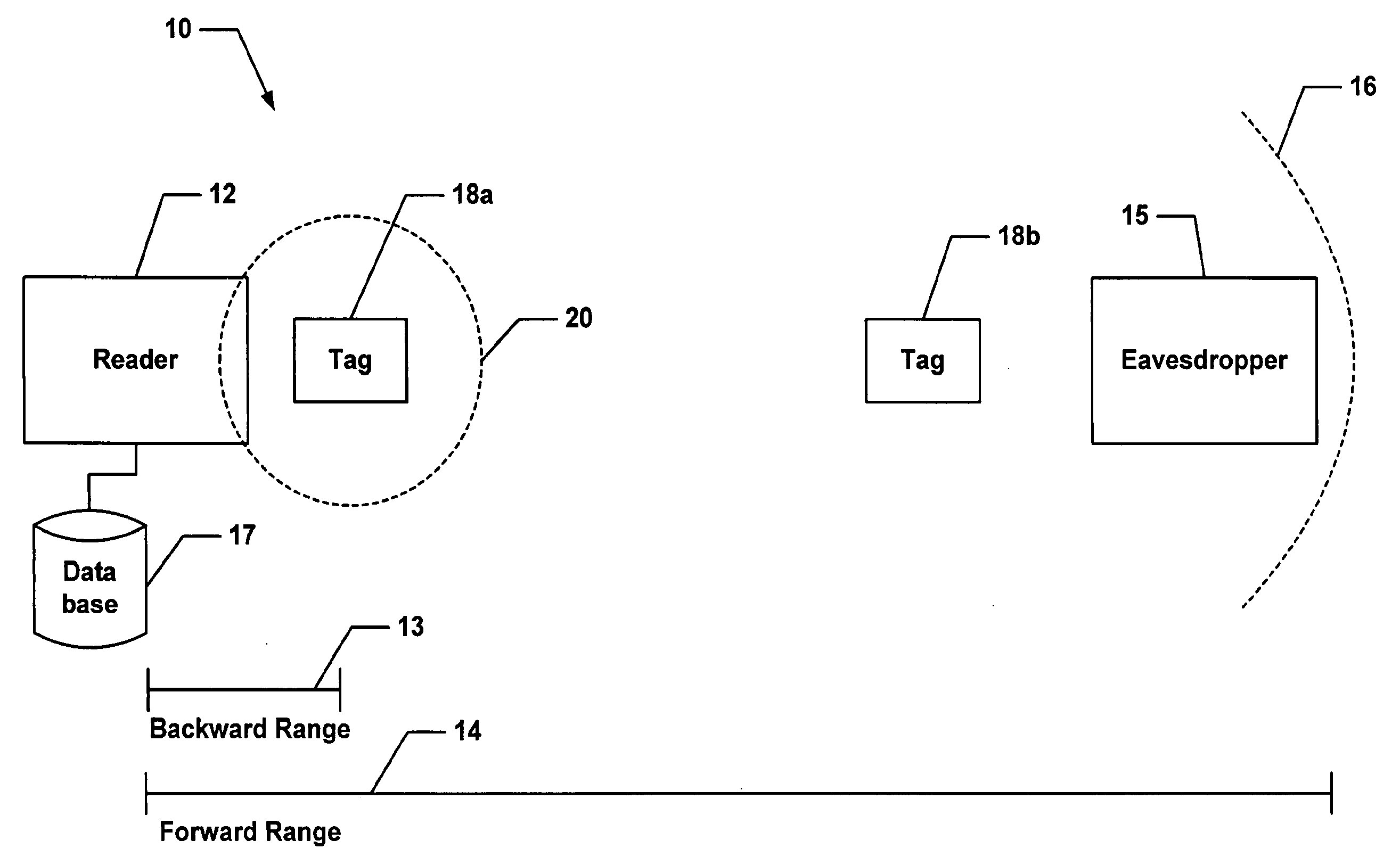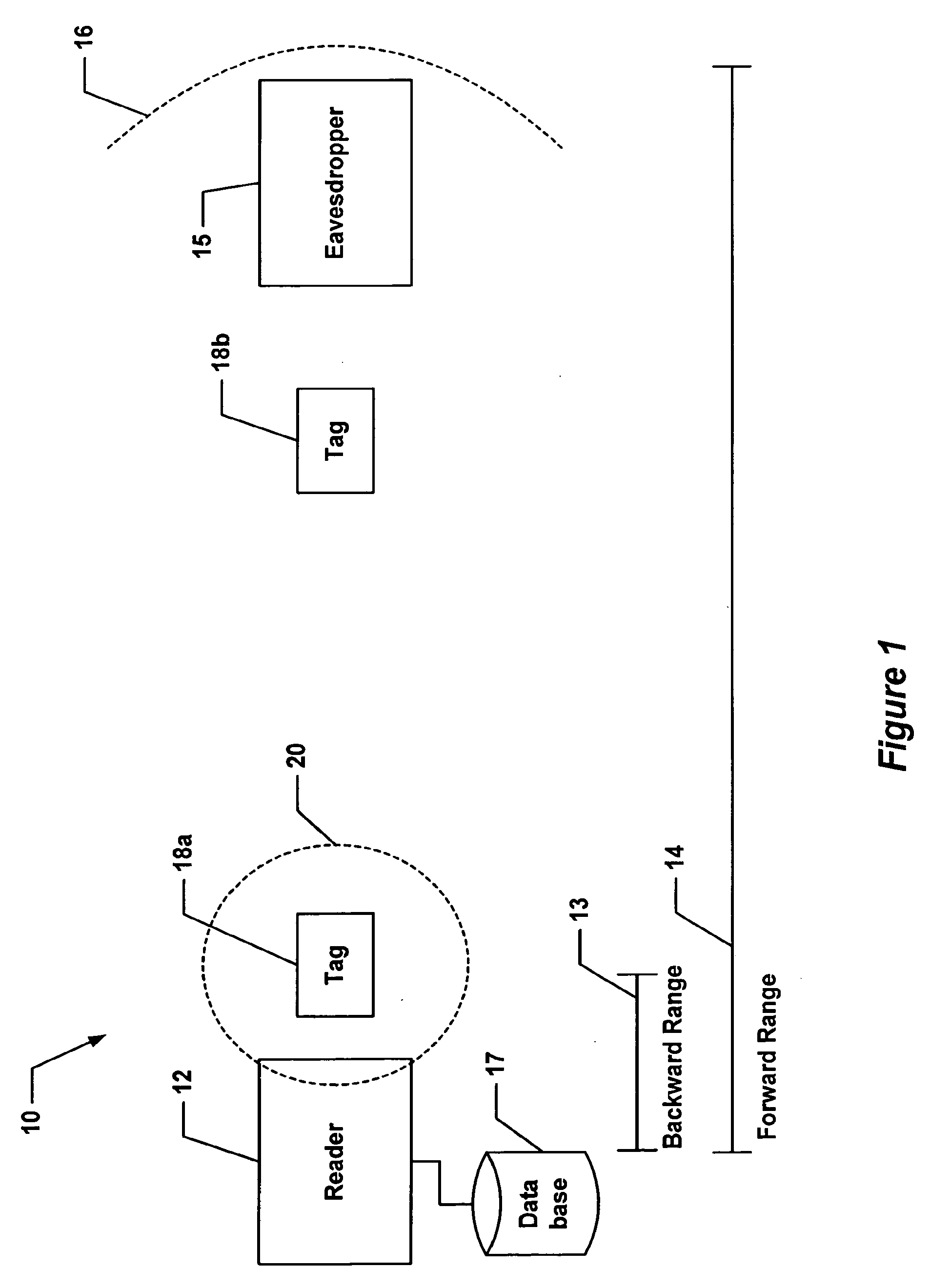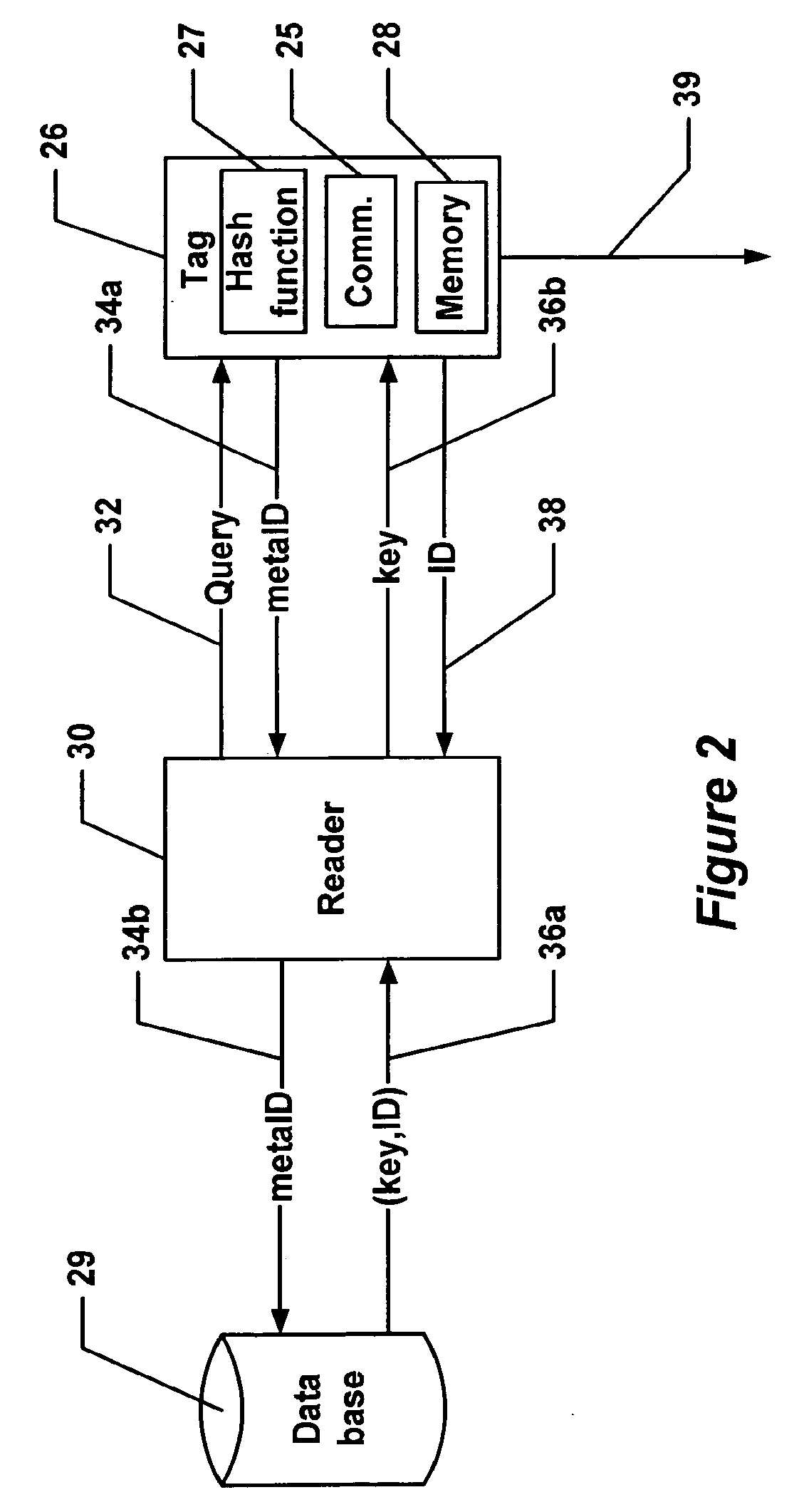Security and Data Collision Systems and Related Techniques for Use With Radio Frequency Identification Systems
a radio frequency identification and data collision technology, applied in the field of radio frequency identification systems, can solve the problem that the rfid tag does not allow detailed (or in some cases any) information to be read, and achieve the effect of avoiding privacy and security risks, simple security, and low-cost rfid
- Summary
- Abstract
- Description
- Claims
- Application Information
AI Technical Summary
Benefits of technology
Problems solved by technology
Method used
Image
Examples
Embodiment Construction
[0033]Before providing a detailed description of the figures, some introductory concepts are explained. The below description describes certain security risks of low-cost radio frequency identification (RFID) tags and describes how to address such security risks. In the description below, certain limitations regarding the operation of the system are taken into consideration. For example, the RFID tags have a minimalist design, are passive, and will provide read-only identification functionality. Also, the tags contain only a few hundred bits of storage, and have a limited operating range of a few meters. Cost requirements limit the tag's gate count such that neither public-key nor symmetric cryptography may be feasibly supported. Furthermore, performance requirements dictate that at least 100-200 tags must be able to be read each second.
[0034]In view of the above and in accordance with the present invention, it has been recognized that Radio Frequency Identification (RFID) transpond...
PUM
 Login to View More
Login to View More Abstract
Description
Claims
Application Information
 Login to View More
Login to View More - R&D
- Intellectual Property
- Life Sciences
- Materials
- Tech Scout
- Unparalleled Data Quality
- Higher Quality Content
- 60% Fewer Hallucinations
Browse by: Latest US Patents, China's latest patents, Technical Efficacy Thesaurus, Application Domain, Technology Topic, Popular Technical Reports.
© 2025 PatSnap. All rights reserved.Legal|Privacy policy|Modern Slavery Act Transparency Statement|Sitemap|About US| Contact US: help@patsnap.com



